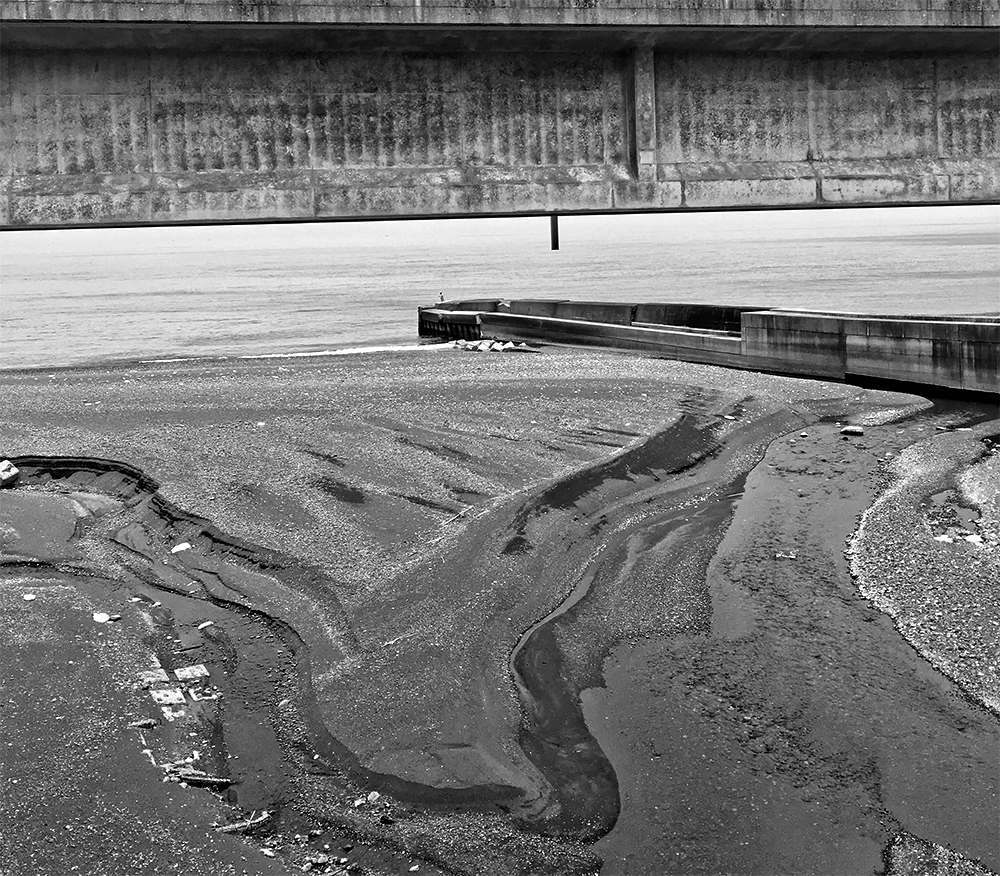
Image courtesy of the author
After following the coast for a week one feels the entire coast of Shikoku is made of concrete. First you have the tsunami walls. These walls are ten metres high and you assume they are at least that depth underground. The walls, in profile, look like square topped pyramids. We walk on top to see the sea. At regular intervals there are iron gates with huge painted letters. These gates let people through and to let water out after a harbour wave.
Next are the reconstructed reefs made of interlocking blocks in various shapes like tire levers or knuckle bones. Porous reefs diffuse the full force of swells. Judging by the lack of moss and algae, the artificial reefs are much newer than the tsunami walls. Even newer are the tsunami evacuation towers. With currents and waves, if you place a solid structure in one spot, waves bounce off altering the natural accretion zones, creating another problem. Having dealt with a localised erosion problem in one spot, locals must now address nearly every kilometre of coast around the island.
What at first glance appeared to be naturally occurring rock was, in fact, made up almost entirely of concrete. In long rows the red cast iron moulds for the breaker pods lay on the wharf filled with a recent pour. Combined with the mid-twentieth century technique of building solid concrete wave barriers, the aggregate sum of concrete deployed along the coast must amount to millions of tonnes of the poisonous substance leaching slowly into the water. Each evening and each morning dynamite is used to explode apart the mountains to gain access to this precious substance; emblem of a static topography. Some settlements owe their existence in large part to the leviathan concretisation effort. These towns provide a mishi-no-eki to tired Henro with sore feet and allow free camping for those too poor to pay for a bed and breakfast. How long local and nation governments can stall erosion of their shoreline and the collapse of seaside villages into the unstoppable, no one can say.









